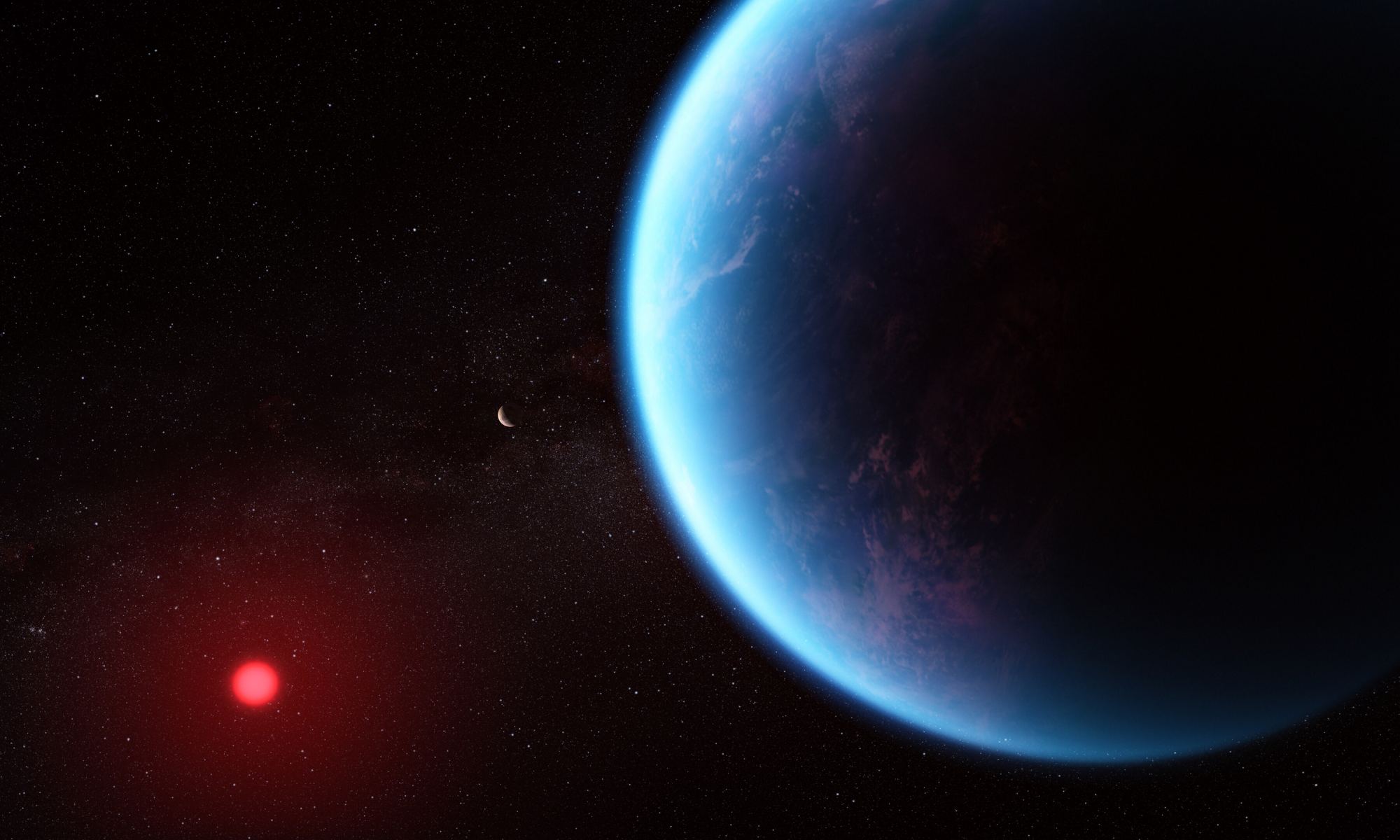Despite its great oceans, Earth is not really an ocean world. It has less water than icy moons such as Europa and Enceladus, a relatively thin nitrogen-rich atmosphere, and vast continents that rise above sea level. A true ocean world would have no continents, a warm sea hundreds of kilometers deep, and a thick hydrogen and water-rich atmosphere. They are known as hydrogen-ocean planets or hycean worlds. While we’ve long thought they exist, the James Webb Space Telescope may now have found one.
Hycean planets are thought to be common in the super-Earth range of mass and size. Super-Earths are often found orbiting red dwarf stars, which are known to have tremendous solar flares. A planet orbiting in a red dwarf’s warm habitable zone risks being stripped of its atmosphere. With a stronger surface gravity than Earth, hycean planets could keep hold of much of their initial atmosphere, which is likely hydrogen and helium, and with a geologically active interior, they could have a strong magnetic field to protect against x-ray radiation and flares. With a mineral-rich warm ocean and thermal ocean vents that could provide the organic building block for life, hycean planets are excellent candidates for alien life. If they exist.
New observations by JWST suggest that they do. The planet in question is K2-18 b. It has a mass nearly 9 times that of Earth, and a radius almost 3 times that of Earth. Its orbit is in the habitable zone of a red dwarf star just 120 light-years from Earth.

This new study used JWST’s Near Infrared Spectrograph (NEARSpec) and Near-Infrared Imager and Slitless Spectrograph (NIRISS) detectors to observe K2-18 b as it passed in front of its star. Some of the starlight passes through the planet’s atmosphere as it transits the star, allowing the team to observe K2-18 b’s atmospheric spectra. The team observed strong signatures of methane and carbon dioxide in the atmosphere and found no evidence of ammonia. These observations are consistent with the hydrogen-dominated atmosphere of a temperate ocean world. The best match for K2-18 b’s atmospheric spectra is a hycean world.
The team also found a couple of intriguing spectral lines indicating the presence of a chemical known as dimethyl sulfide (DMS). There are traces of DMS in Earth’s atmosphere, where the primary source is microbial marine life such as phytoplankton. This could be the first biosignature of life on another world, but the data is relatively weak. It’s too soon to conclude that K2-18 b harbors life in its hycean sea.
The team now plans to observe further transits using JWST’s Mid-InfraRed Instrument (MIRI), as well as other observations to confirm the presence of DMS and gather a more detailed atmospheric spectrum. In the near future, we may discover more great ocean worlds, and perhaps even alien life in their distant hycean seas.
Reference: Nikku Madhusudhan et al. “Carbon-bearing Molecules in a Possible Hycean Atmosphere.” Presented at The First Year of JWST Science Conference (2023)

